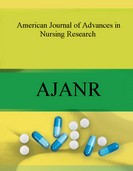Abstract
Title
EFFECTIVENESS OF BACK STRENGTHENING EXERCISES ON
LOW BACK PAIN AMONG POST MENOPAUSAL WOMEN IN
SELECTED VILLAGE
Author
Sathiya A
Email
keyword
back strengthening
exercises, low back
pain, post menopausal
women
Abstract
A quasi experimental study was conducted to evaluate the effectiveness of back
strengthening exercises on low back pain among post menopausal women in selected area.
The quasi experimental pre-test post-test control group design was adopted and the post
menopausal women from Ammapet area were chosen for the study. 60 samples were
selected by purposive sampling technique. The level of low back pain was assessed by using
modified Oswestry low back pain disability questionnaire. Back strengthening exercise was
administered for Study group. Post test done on fourth week of the data collection period.
The data gathered were analyzed by descriptive and inferential statistical method and
interpretations were made on the basis of the objectives of the study. During pretest, in
Study group none of them had minimal low back pain, 9(30%) had moderate low back pain,
16(53.33%) had severe low back pain, 5(16.66%) had crippled low back pain and none of
them had bed bound. In Control group, none of them had minimal low back pain, 10
(33.33%) had moderate low back pain, 17(56.66%) had severe low back pain 3(10%) with
crippled low back pain, none of them with bedbound. During post test, in Study group
19(63.33%) had minimal low back pain, 7(23.33%) had moderate low back pain, 2(6.66%)
had severe low back pain and 26.66%) had crippled low back pain. In Control group, none
of them had minimal low back pain, 10(33.33%) had moderate low back pain, 17(56.66%)
with severe low back pain, and 3(10%) crippled low back pain. The mean score on level of
low back pain among post menopausal women in Study group were 49.93 in pre test and
19.73 in post test respectively. The paired‘t’ value for low back pain were 10.74* which is
significant at p < 0.05. It shows that back strengthening exercise was effective in reducing
the level of low back pain. Hence the research hypothesis h1 is accepted. In Control group
the mean score on level of low back pain among post menopausal women were 48 in pre
test and 48 in post test respectively. The estimated paired‘t’ value for low back pain were
0.26 which is not significant at p < 0.05. The data findings showed that there was no
significant association between the post test level of low back pain among post menopausal
women with their demographic variable such as age, education, occupation, income,
religion, dietary pattern, type of delivery, number of children, age of menopause and type of
menopause at p>0.05 level. Hence hypothesis H3 is not accepted.













